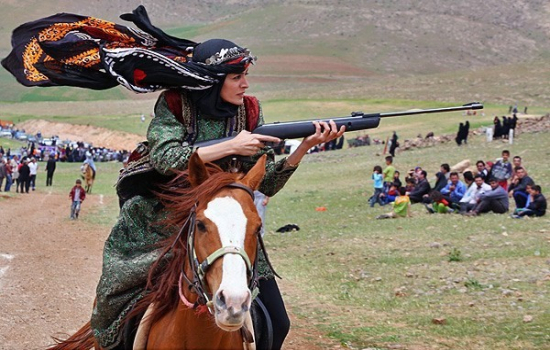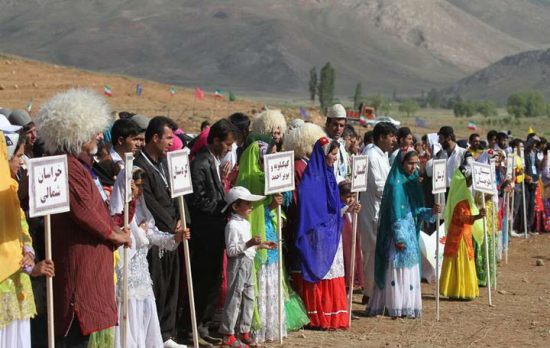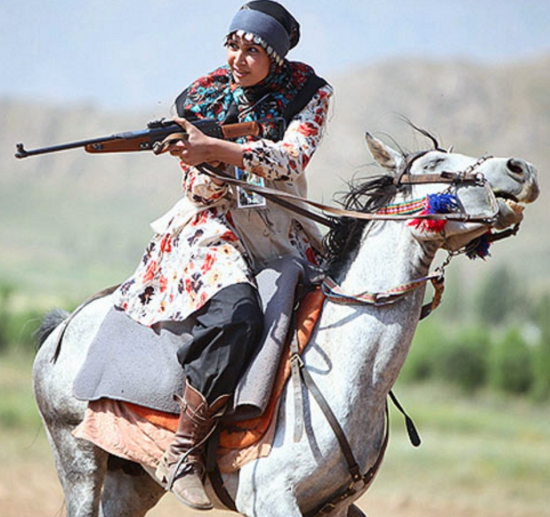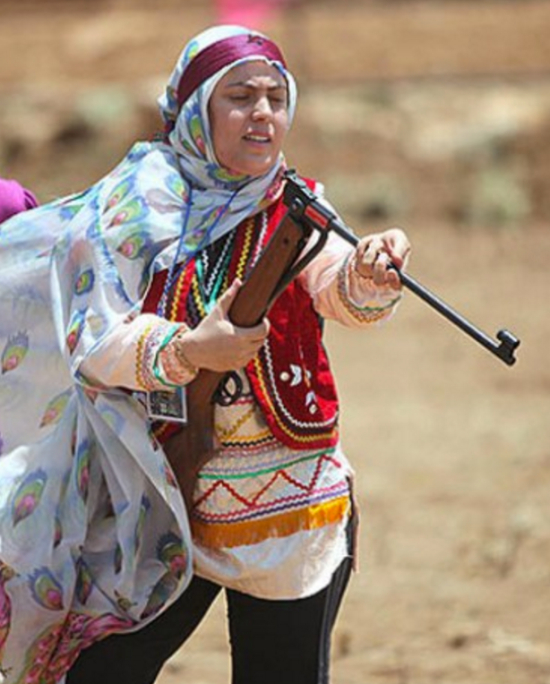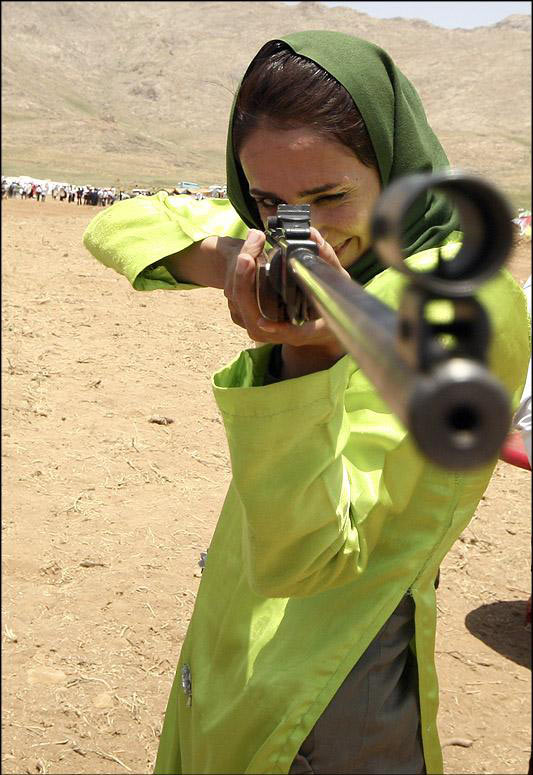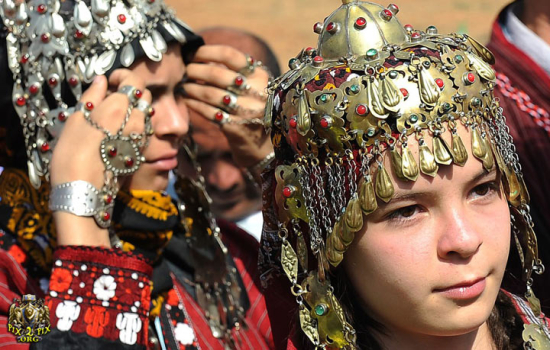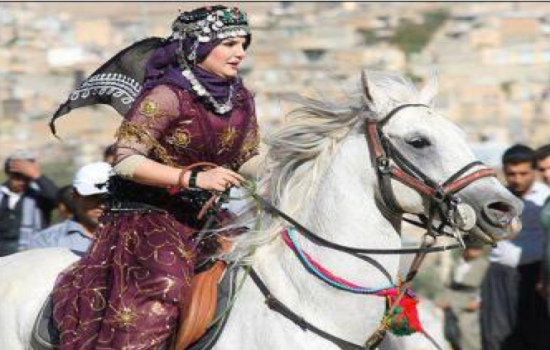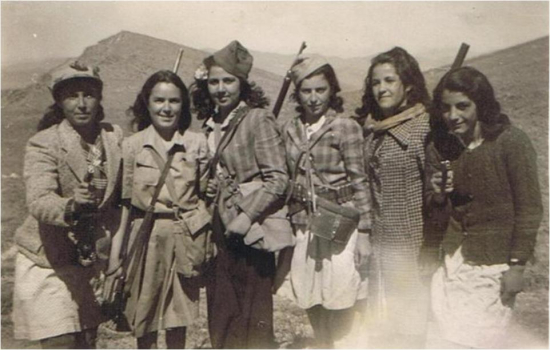
| PERSIAN TRIBAL WOMEN Persian Tribal Women in Shooting and Horseback Riding Competitions :
The photographs below are from a national Olympiad in Iran between different tribal elements with respect to horseback riding, sharpshooting, and other various athletic skills. Most of these can be found here :
The Second Cultural National Nomads/Tribes Sports Olympiad hosted by the Fereydanshahr county of Isfahan was Held (April 12, 2014).
These types of activities have been in Iran since ancient times, with Classical authors and later European travellers reporting on exercises in riding, firing arrows from horseback, etc. What is of interest in the photos below are Iran’s tribal women partaking in shooting and horseback riding competitions. Western media and news outlets have avoided mentioning such events. The reasons for this are open to speculation.
Representatives of a number of Iranian tribes holding signs designating their respective regions – from left to right: first sign-Northern Khorasan, second sign unintelligible, third sign-Kurdistan, fourth sign-Kahkiloye & Boyerahmad, fifth sign-Golestan(?), sixth sign-Luristan, seventh sign-Sistan and Baluchistan; remaining signs unintelligible. Note that the photo is partial, in that it does not show all of the tribes participating in the event (Source: Akairan.com).
What is certain is that given the heavy impact of media (news, etc.), TV and movie industries, the overwhelming majority of Western and international audiences have never seen the below images of Iranian tribal women.
Lur girl swings round to her side to fire at target (Source: Akairan.com) It is a fact that one of the domains that have received the least amount of attention by Western scholarship is the role women warriors of ancient Persia.
Women for example were seen in positions of military leadership in the armies of the Achaemenids (550-330 BCE). A prime example of this is Artemesia of Halicarnassius (now in modern western Turkey) one of Xerxes’ most capable admirals during the failed invasions of Greece in 480 BCE. The daring naval exploits of Artemesia reputedly led Xerxes to state that:
“…my men have become women and my women have become men”.
Artemesia was also one of Xerxes’ chief military advisors.
Kurdish girl checks her rifle barrel before engaging in sharpshooting competitions (Source: Akairan.com) The role of ancient Iranian female warriors continued after Alexander’s conquests and the overthrow of his Seleucid successors in Iran by the Parthians (250 BC – 224 CE).
A Reuters newscast from Tehran in December 4, 2004 reported on the findings of an archaeologist who had been engaged in excavations near Tabriz, in Iran’s northwest province of Azarbaijan. A series of DNA tests revealed that the 2,000 year old bones of an entombed warrior and accompanying sword belonged to a woman. As noted by Alireza Hojabri-Nobari to the Iran-based Hambastegi Newspaper:
“Despite earlier comments that the warrior was a man because of the metal sword, DNA tests showed the skeleton inside the tomb belonged to a female warrior…”
According to Nobari, there were 109 such warrior tombs, and plans were in place to conduct DNA tests on the skeletons of the other ancient warriors of those sites as well.
Young Lur girl takes aim with her rifle (Source: Akairan.com) Roman historical sources have reported on the exploits of the women warriors of the Sassanian Empire (224-651 CE). Zonaras (XII, 23, 595, 7-596, 9) states in reference to the forces of Shapur I that:
“…in the Persian army…there are said to have been found women also, dressed and armed like men…”
Turkmen girls in their traditional attire at the Fereydanshahr competition (Source: Akairan.com) The exploits of Persia’s female warriors are recalled in the post-Islamic Shahnama epic of Ferdowsi. One sample quote states of the female warrior Gordafarid that:
“…as she was turning in her saddle, drew a sharp blade from her waist, struck at his lance, and parted it in two.”
Lur woman in a local competition in Luristan province in Western Iran, partaking in a shooting contest on horseback (Source: Wisgoon.com) There are reports that the wife of Karim Khan Zand of Luristan and the wives of his Lur troops often fought beside them in battle against the Afghans in Nader Shah’s time. The Afghans made a point of heaping scorn upon the Zand units who defeated them by characterizing their men as:
“…hiding behind their women’s skirts”
Kurdish lady partaking in a riding competition in Iran’s Kurdish regions (Marivan or Kermanshah?) (Source: Kurdane.com) While Western media, entertainment (especially Hollywood and the entertainment industry) continue to block and ignore such images and information, the legacy of ancient Iran’s warrior women continue to endure.
Lur women from Malayer (near Hamedan in the northwest) engaged in target practice in the Eznab area of Malayer city limits in the late 1950s. The association between weapons and women is nothing new in Iran; Roman references for example note of Iranian women armed as regular troops in the armies of the Sassanians (224 - 651 CE)
Source :
http://kavehfarrokh.com/ |
